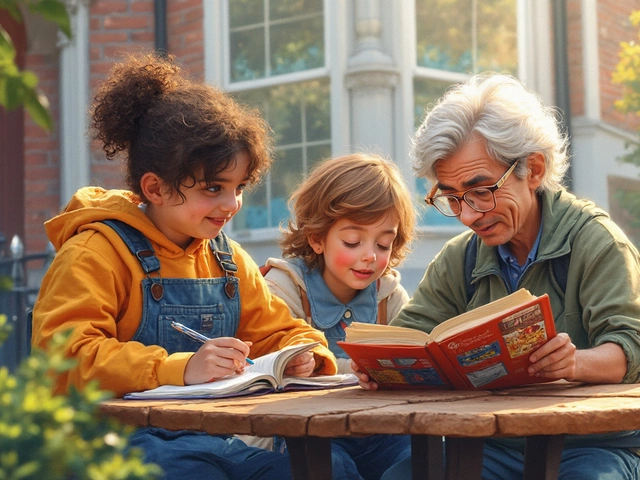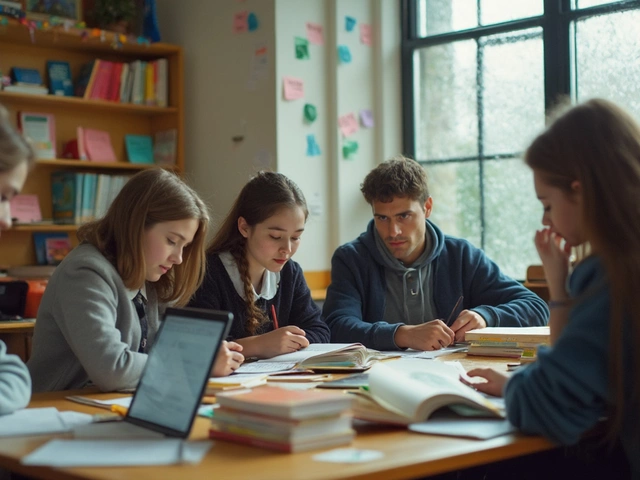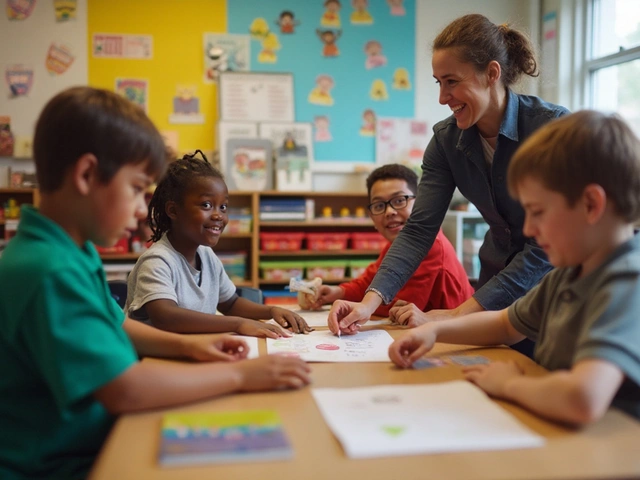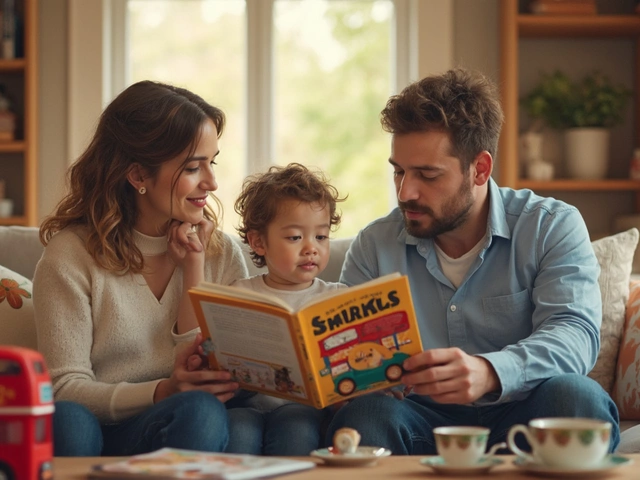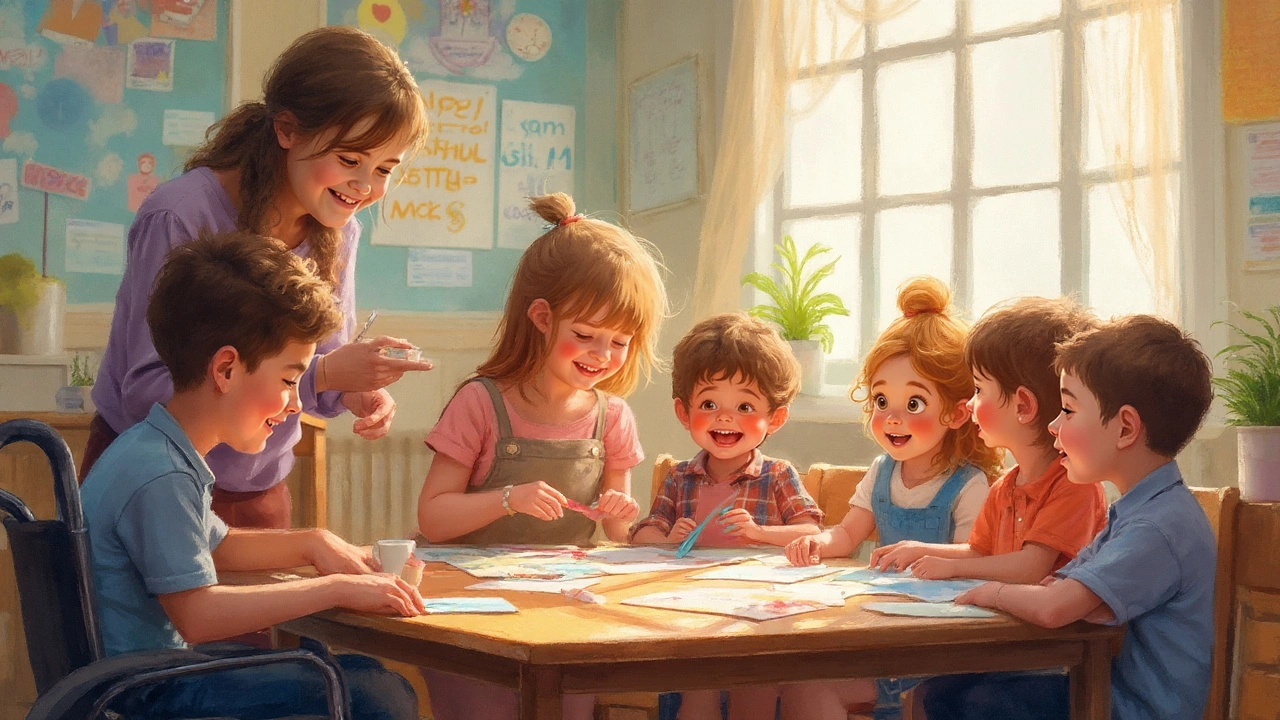Ever notice how the smallest things can light up a child with special needs? Like the way a perfectly timed smile or a gentle pat on the back can make school feel safe. The real magic isn’t about fancy technology or expensive programs. It’s about being human—listening, adapting, and remembering that no two kids are the same. In Dublin, I’ve seen schools that get this right, turning expectations upside down. And trust me, it matters.
Understanding the Different Types of Special Needs
When we talk about children with special needs, we’re not just using a catchall phrase. There’s a whole spectrum of differences, and they show up in countless ways. You might think immediately of autism, ADHD, or Down syndrome, but that’s just the tip. Kids can have learning difficulties, speech and language delays, sensory challenges, chronic health issues, or emotional and behavioral needs. Each of these comes with its own hurdles and surprises. For example, some kids with autism are nonverbal but have a brilliant knack for puzzles or music. A child with dyslexia might struggle to read out loud but shine in storytelling or art. The trick is seeing beyond the diagnosis.
The latest data uncovered by the National Council for Special Education in Ireland shows that as many as 1 in 5 students will need some form of special educational support at some point. That’s not just rare cases—that’s a regular part of life in almost every classroom. In 2024, Ireland’s Department of Education announced an 18% increase in funding for special needs support compared to five years earlier. This tells you just how mainstream—and urgent—the issue is becoming.
Special needs can be grouped into four main areas: communication and interaction, cognition and learning, social, emotional, and mental health, and sensory and physical needs. But here’s where it gets tricky: most kids fall into more than one category. Maybe you’ve met a bubbly child who struggles with writing but also panics in loud environments. There’s overlap all the time. And every child’s mix is unique.
So, before even thinking about “handling” or teaching these kids, it’s essential to ask: What are their strengths? What are they passionate about? Where do they feel stuck? Forget the labels for a moment. The most successful strategies stem from curiosity and genuine interest in what makes each child tick. When I work with families in Dublin, this simple shift—focusing on what’s possible, not what’s missing—always opens doors.
Effective Communication: Connect First, Teach Second
If you ever tried to get Luna, my cat, to come down from the bookshelf when she’s in a mood, you’ll know a thing or two about patience and communication. It’s not so different with kids who find communication tricky. You need to get on their level—wait your turn, listen, and let them lead the way.
With nonverbal kids, gestures or communication boards matter. Some thrive using devices like iPads—one tap for ‘yes’ or a picture card for ‘break.’ Others prefer simple sign language. Researchers out of Trinity College, Dublin, found that schools using alternative and augmentative communication (AAC) saw students’ stress levels and disruptive behaviors drop by nearly a third. Tools like PECS (Picture Exchange Communication System) or apps such as Proloquo2Go have become game changers.
But the technology’s only as good as the attitude behind it. It’s about noticing eye contact, listening when there are no words, and picking up on the signs a child gives off when they’re overwhelmed or excited. Even simple visuals—like a “now and next” board—can help a child feel prepared. I have a friend whose eight-year-old daughter won’t start anything until she’s seen the plan for her day. No surprises. It’s about trust.
If a child is upset, the urge is often to ‘fix’ it fast. Instead, backing off and giving space is sometimes more effective. One teacher I know keeps fidget tools and headphones at her desk so kids can self-regulate. There’s a balance—support, but don’t smother. Watch, learn, and match your tempo to theirs. It makes a world of difference.
- Use clear, simple instructions
- Visual aids for routines and transitions
- Provide choices wherever possible
- Be consistent with language and cues
- Praise effort and clear communication, not just ‘correct’ answers
A child who feels understood becomes ready to tackle learning. Without that connection, nothing else sticks.
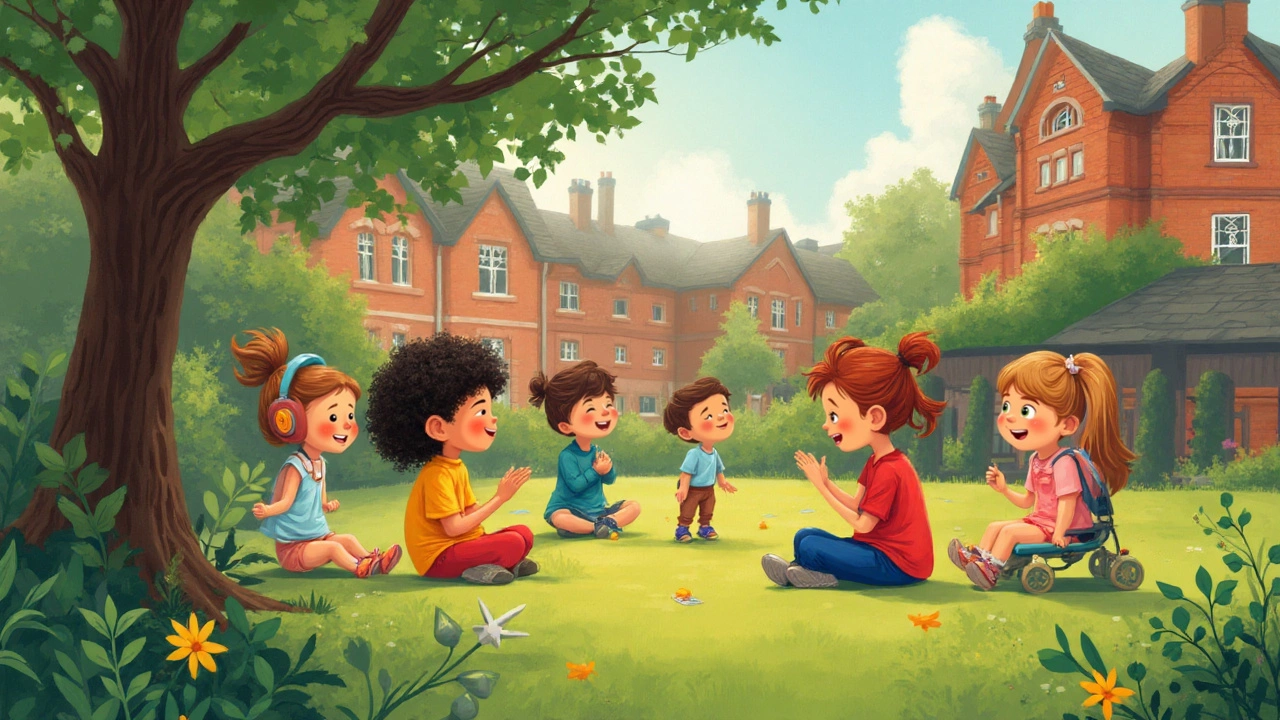
Adapting the Environment and Routine
Ever walk into a classroom and notice the buzz of fluorescent lights—or the clatter of chairs that makes your jaw clench? Imagine dealing with that level of sensory overload every day. For many children with special needs, small tweaks in the physical environment make or break their success.
Flexible classrooms are key. That might be beanbags in a reading corner, adjustable lighting, or noise-canceling headphones. Something as simple as a visual timetable on the wall can remove serious anxiety about what’s coming next. According to the Irish Association of Teachers in Special Education, over 70% of teachers who introduced quiet zones or sensory corners found kids less likely to meltdown or tune out.
Schools are catching on. You’ll see fidget boxes, sensory paths marked on floors, and routines built around predictable transitions. Some teachers use “first-then” schedules on Velcro boards: First, maths; then, snack. These are not just tricks—they’re lifelines.
Tables in flexible groupings help kids who work better with friends or who need frequent breaks. Sometimes, one child needs more space or a desk facing away from distractions. For some, a standing desk or a wobble stool can keep energy in check. Even schoolyards are evolving: quieter play areas, games with simple rules, and careful supervision during transitions.
A routine isn’t just about time. It’s about security. Many children with special needs find change stressful. Teachers who plan for change, prep kids ahead, and have backup strategies see more smiles and fewer disruptions. For example, set a timer so everyone knows when an activity is ending, and give warnings before transitioning to something new.
| Adjustment | Impact |
|---|---|
| Visual Schedules | Reduces anxiety in 85% of students with autism (NCSE 2023) |
| Sensory Corners | Meltdowns halved in pilot schools in Dublin (IAS 2024) |
| Fidget Tools | Improved focus in 2 out of 3 children with ADHD |
| Flexible Seating | Increased engagement in 70% of trial participants |
None of these require huge budgets. It’s mindset, not money, that moves the dial.
Building Individualized Education and Support Plans
Cookie-cutter solutions just don’t work with special needs. Every child deserves a plan as unique as they are. That’s where Individual Education Plans (IEPs) or personal support plans come in. These documents lay out what the child needs, their strengths, where they struggle, and clear goals to aim for.
Parents, teachers, and therapists all have a say. The best plans break goals down into tiny steps. Instead of “improve reading,” it’s “read three new words per week.” Instead of “be less disruptive,” it’s “ask for a break when overwhelmed.” This makes progress visible and gives everyone a win to celebrate. A study from University College Dublin found that when schools review these plans consistently—at least once a term—students are over 40% more likely to hit their targets.
Don’t forget accommodations. Some kids need more time for tests, alternative ways to show their knowledge, or a scribe. For others, it’s about shorter assignments or more breaks. The law in Ireland backs up a child’s right to reasonable accommodations, and schools are learning to get creative here.
Another layer is the link between home and school. I’ve known parents who keep daily communication notebooks, swapping quick notes with teachers each afternoon just to flag what went well—or what didn’t. Open lines, honest updates, fewer shocks.
- Create clear, achievable goals for skills and behavior
- Assign who’s responsible for each step (teacher, aide, parent, therapist)
- Regularly review progress together
- Adapt the plan if something isn’t working
- Listen to the child’s own voice, if possible
When a child feels the plan is made with—not just for—them, buy-in jumps. Kids sense respect every time.
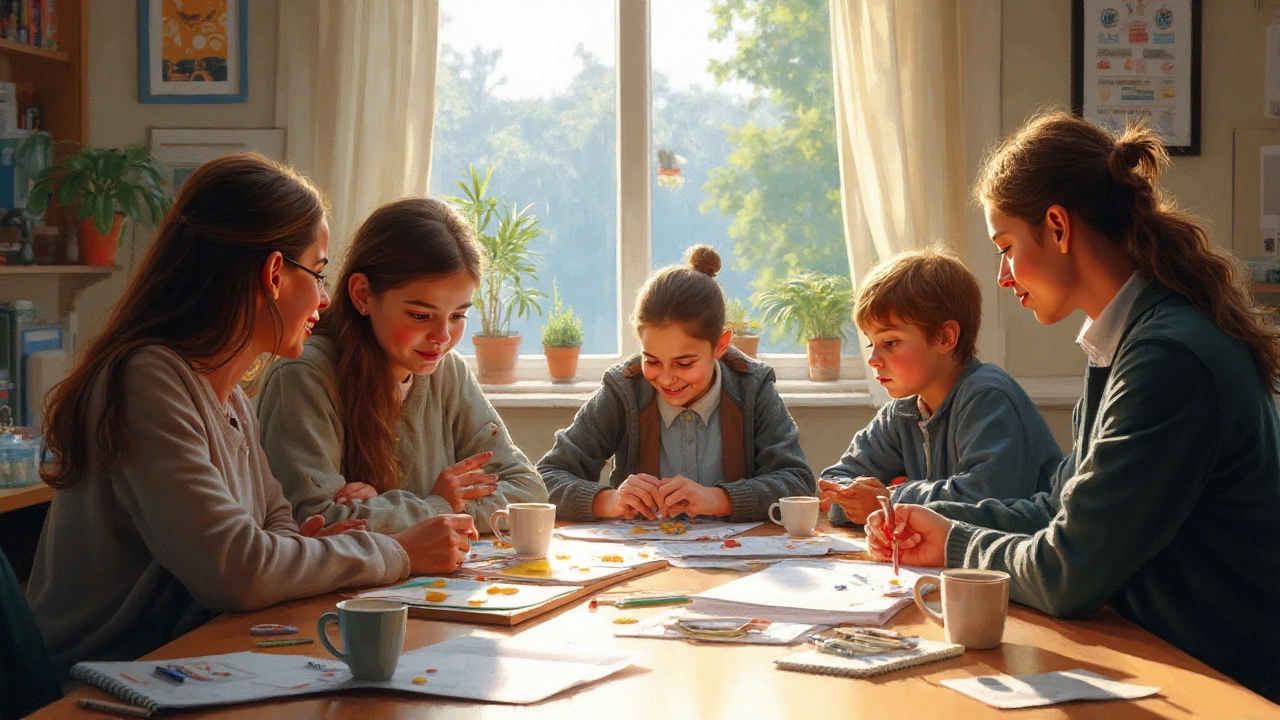
Empowering and Including Children with Special Needs
Inclusion goes way beyond letting a child sit in the classroom. It’s about friendship and being picked for games at break. It’s about real chances to lead, speak up, and shine—inside or outside lessons. The evidence backs this up: Barnardos Ireland found that inclusive schools not only boost the confidence of children with special needs, but also create kinder, more tolerant environments for everyone.
Peer buddies, classroom jobs, and shared projects help bridge the gap. Some schools pair neurodiverse kids with classmates who share interests—like Lego, art, or nature. It gives both sides a reason to connect. Simple social skills groups work wonders, too. These aren’t about “fixing” anyone, but building empathy and communication one step at a time.
Highlighting achievement helps, too. Maybe one child can sing, tell jokes, or help with the garden. Spotlight those talents in assemblies or displays. It’s not about tokenism—it’s about recognising value. Real inclusion means adjusting sports days, field trips, or school plays so that every child has a meaningful role. Recently in Dublin, a primary school gave a nonverbal student the lead in a mime during the class play. The standing ovation said it all.
Just as important: teach classmates from the earliest age about difference—without fuss, just facts and stories. Kids are naturally curious and quick to accept what’s made normal. According to a 2024 survey of Irish primary students, 82% said they had a “friend with special needs” and described their school as welcoming. Not perfect, but real progress.
- Provide accessible extracurriculars and leadership roles
- Run disability awareness workshops for all students
- Encourage teamwork and celebrate group successes
- Make sure support staff feel empowered, not isolated
- Show all children that growth matters more than perfect results
A school—and a community—that truly includes children with special needs ends up better for everyone.

